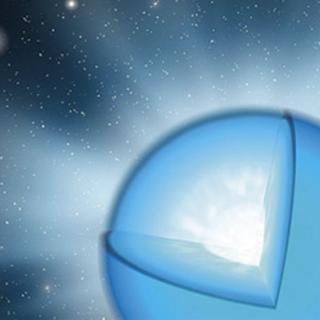Bibcode
Wofford, Aida; Ramírez, Vanesa; Lee, Janice C.; Thilker, David A.; Della Bruna, Lorenza; Adamo, Angela; Van Dyk, Schuyler D.; Herrero, Artemio; Kim, Hwihyun; Aloisi, Alessandra; Calzetti, Daniela; Chandar, Rupali; Dale, Daniel A.; de Mink, Selma E.; Gallagher, John S.; Gouliermis, Dimitrios A.; Grasha, Kathryn; Grebel, Eva K.; Sacchi, E.; Smith, Linda J.; Úbeda, Leonardo; Walterbos, Rene A. M.; Hannon, Stephen; Messa, Matteo
Referencia bibliográfica
Monthly Notices of the Royal Astronomical Society
Fecha de publicación:
4
2020
Número de citas
13
Número de citas referidas
11
Descripción
Only about 19 Galactic and 25 extragalactic bonafide luminous blue variables (LBVs) are known to date. This incomplete census prevents our understanding of this crucial phase of massive star evolution which leads to the formation of heavy binary black holes via the classical channel. With large samples of LBVs one could better determine the duration and maximum stellar luminosity which characterize this phase. We search for candidate LBVs (cLBVs) in a new galaxy, NGC 7793. For this purpose, we combine high spatial resolution images from two Hubble Space Telescope (HST) programs with optical spectroscopy from the Multi Unit Spectroscopic Explorer (MUSE). By combining PSF-fitting photometry measured on F547M, F657N, and F814W images, with restrictions on point-like appearance (at HST resolution) and H α luminosity, we find 100 potential cLBVs, 36 of which fall in the MUSE fields. Five of the latter 36 sources are promising cLBVs which have MV ≤ -7 and a combination of: H α with a P-Cygni profile; no [O I] λ 6300 emission; weak or no [O III] λ 5007 emission; large [N II]/H α relative to H II regions; and [S II] λ 6716/[S II] λ 6731∼ 1. It is not clear if these five cLBVs are isolated from O-type stars, which would favour the binary formation scenario of LBVs. Our study, which approximately covers one fourth of the optical disc of NGC 7793, demonstrates how by combining the above HST surveys with multi-object spectroscopy from 8-m class telescopes, one can efficiently find large samples of cLBVs in nearby galaxies.
Proyectos relacionados

Propiedades Físicas y Evolución de Estrellas Masivas
Las estrellas masivas son objetos claves para la Astrofísica. Estas estrellas nacen con más de 8 masas solares, lo que las condena a morir como Supernovas. Durante su rápida evolución liberan, a través de fuertes vientos estelares, gran cantidad de material procesado en su núcleo y, en determinadas fases evolutivas, emiten gran cantidad de
Sergio
Simón Díaz